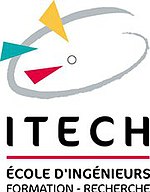| Titre : |
Synergistic material extrusion 3D-printing using coreâshell filaments containing polycarbonate-based material with different glass transition temperatures and viscosities |
| Type de document : |
texte imprimÃĐ |
| Auteurs : |
Fang Peng, Auteur ; Bryan D. Vogt, Auteur ; Miko Cakmak, Auteur |
| AnnÃĐe de publication : |
2022 |
| Article en page(s) : |
p. 406-414 |
| Note gÃĐnÃĐrale : |
Bibliogr. |
| Langues : |
Anglais (eng) |
| CatÃĐgories : |
Etat fondu (matÃĐriaux)
FilamentsFibre de longueur infinie ou extrÊme comme celle qu'on trouve dans la soie à l'ÃĐtat naturel. Les fibres manufacturÃĐes sont extrudÃĐes en filaments qui sont transformÃĐs en fils continus, en fibres courtes ou en cÃĒbles.
Impression tridimensionnelle
MatiÃĻres plastiques -- Extrusion
MatiÃĻres plastiques -- PropriÃĐtÃĐs mÃĐcaniques
Polycarbonates
|
| Index. dÃĐcimale : |
668.4 Plastiques, vinyles |
| RÃĐsumÃĐ : |
The application of 3D printing of thermoplastics by Material Extrusion (MatEx) has commonly been limited by their poor mechanical strength that results from voids and weak interfaces between printed layers. Here, we demonstrate that coreâshell structured filaments made of polycarbonate-based thermoplastics can achieve synergistic improvement in their interfacial bonding from the combination of high-glass transition temperature (T g)/high-viscosity core and low-T g/low-viscosity shell. Tensile strength along the printing direction was enhanced with the coreâshell filaments. Layer-interfacial bonding strength as determined by Izod impact tests of the 3D printed parts is significantly improved by using filaments either with only a coreâshell T g mismatch or both T g/viscosity coreâshell mismatch. The mechanical behavior can be rationalized in terms of improved inter-layer molecule diffusion by a low T g/viscosity shell, better printability at higher temperature due to the core with higher melt strength, and better bulk mechanical strength of high-viscosity/T g core. |
| Note de contenu : |
- EXPERIMENTAL : Filament extrusion - 3D printing - Characterization
- RESULTS AND DISCUSSION : Material properties - Core-shell structure - Tensile properties
- Table 1 : Temperature profile for filament extrusion using Rheomex 252p.
- Table 2 : Temperature profile for filament extrusion using M-PAK125
- Table 3 : Temperature profile for filament co-Extrusion |
| DOI : |
https://doi.org/10.1515/ipp-2022-4217 |
| En ligne : |
https://drive.google.com/file/d/1t-UNX1-sKaib9Np8EPRGlMqfrDgCAjXm/view?usp=shari [...] |
| Format de la ressource ÃĐlectronique : |
Pdf |
| Permalink : |
https://e-campus.itech.fr/pmb/opac_css/index.php?lvl=notice_display&id=37916 |
in INTERNATIONAL POLYMER PROCESSING > Vol. 37, N° 4 (2022) . - p. 406-414
 Accueil
Accueil



 Ajouter le rÃĐsultat dans votre panier Affiner la recherche
Ajouter le rÃĐsultat dans votre panier Affiner la rechercheSynergistic material extrusion 3D-printing using coreâshell filaments containing polycarbonate-based material with different glass transition temperatures and viscosities / Fang Peng in INTERNATIONAL POLYMER PROCESSING, Vol. 37, N° 4 (2022)

 Aller sur edunet
Aller sur edunet

